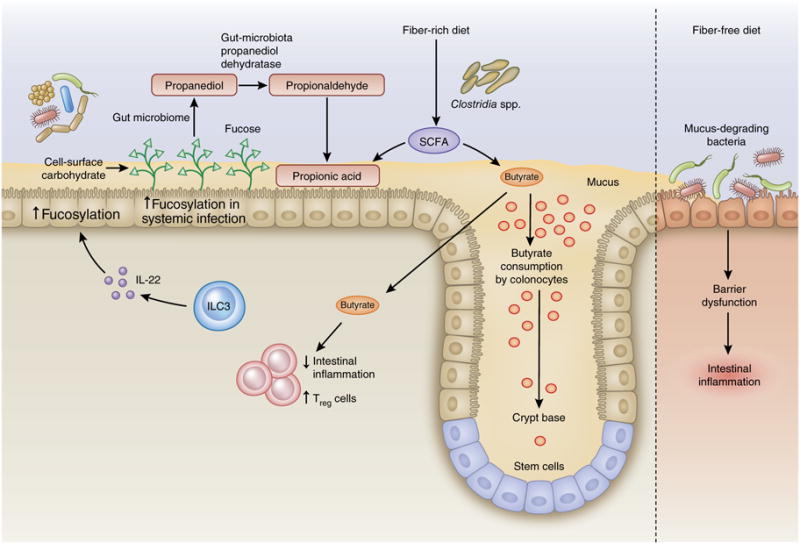Figure 1.

Dietary fiber and SCFAs in intestinal homeostasis. Anaerobic fermentation of dietary fiber by members of the commensal microbiota, particularly by Clostridia spp., serves as a source of SCFAs, which help to maintain Treg cell expansion, immunosuppressive function and overall intestinal homeostasis. Butyrate is the preferred metabolic energy source for colonocytes but is detrimental to stem cells, inhibiting their proliferation and wound-repair functions67. The strategic positioning of colonocytes and stem cells within the colon mirrors the concentration gradient of butyrate: colonocytes are positioned at the location of highest concentrations near the lumen, where they consume butyrate, thus decreasing the concentration to which distally located stem cells within the colonic crypts are exposed. Propionate is the end product of fucose metabolism by the microbiota. The host increases fucosylation of epithelial-cell carbohydrates during infection, thereby protecting its gut commensals116. Fucose-using B. acidifaciens increase in abundance and elevate their metabolism of fucose, thus leading to propanediol formation. Propanediol dehydratase converts propanediol to propionaldehyde, thereby generating propionic acid77, which in turn tempers inflammation and protects host tissues from collateral damage during the immune response to infection.
